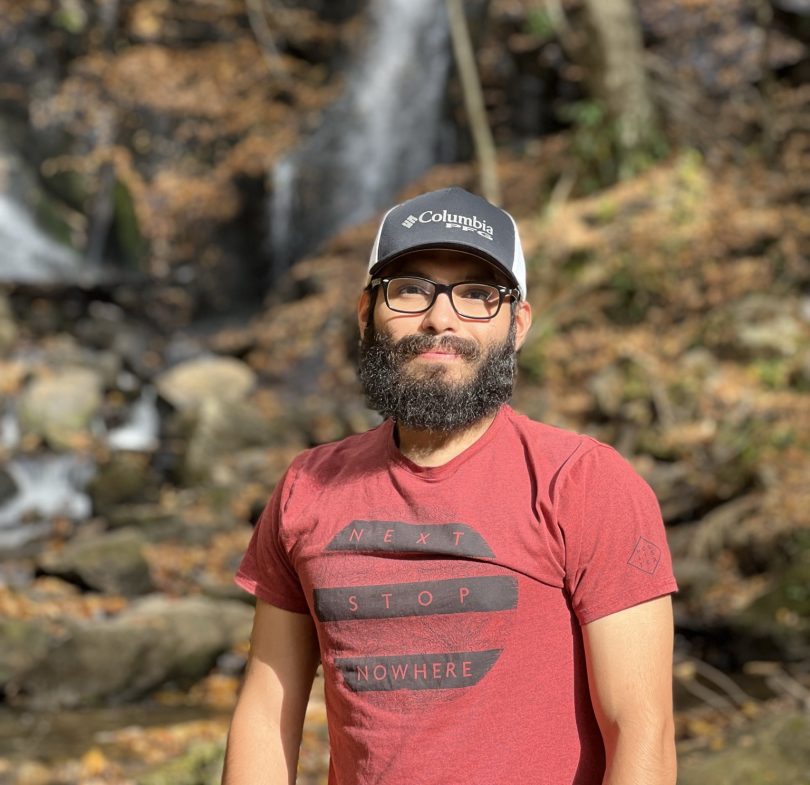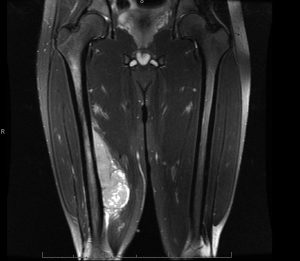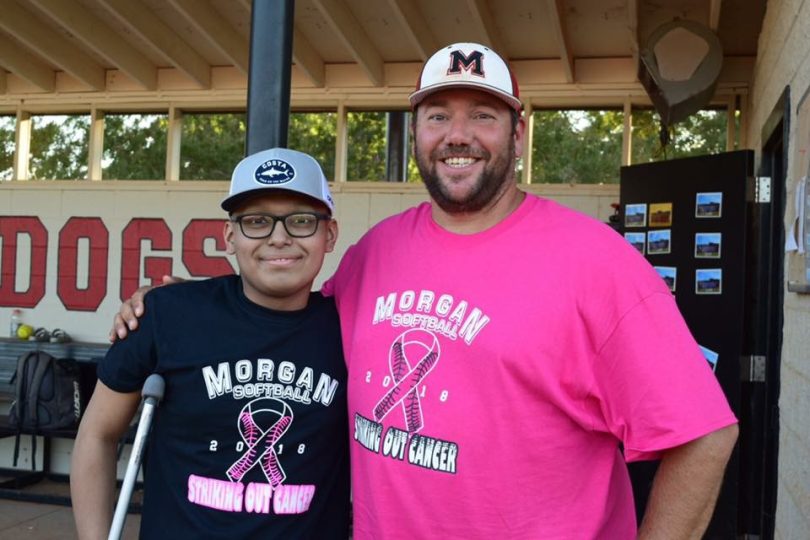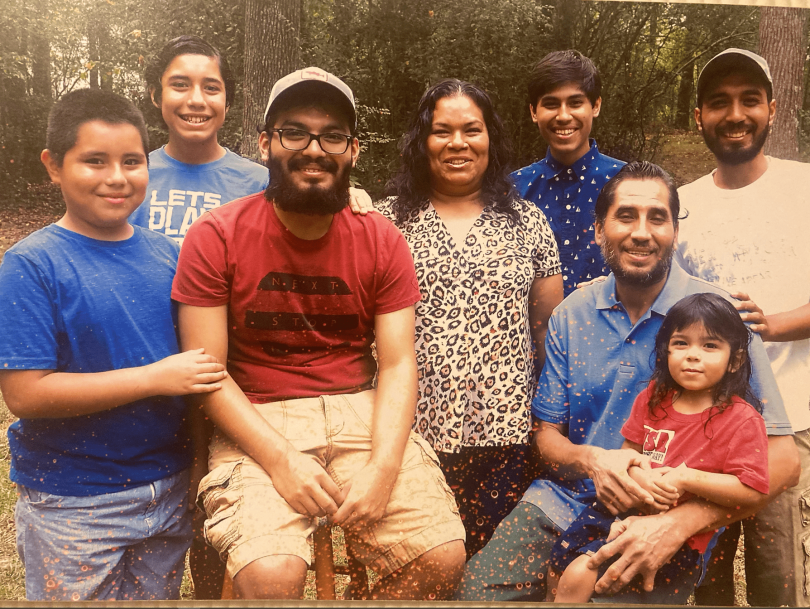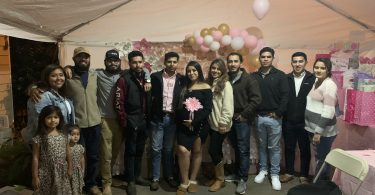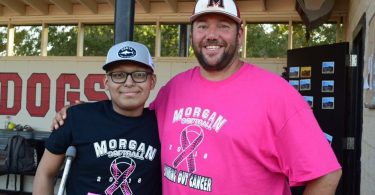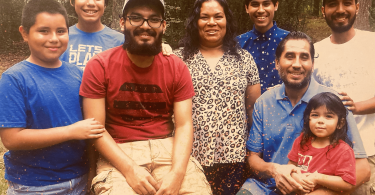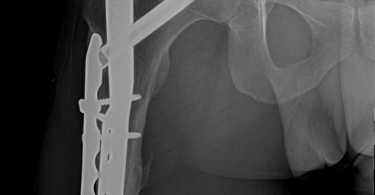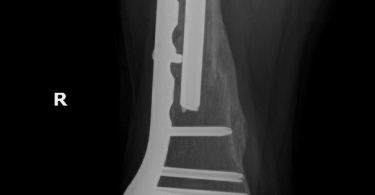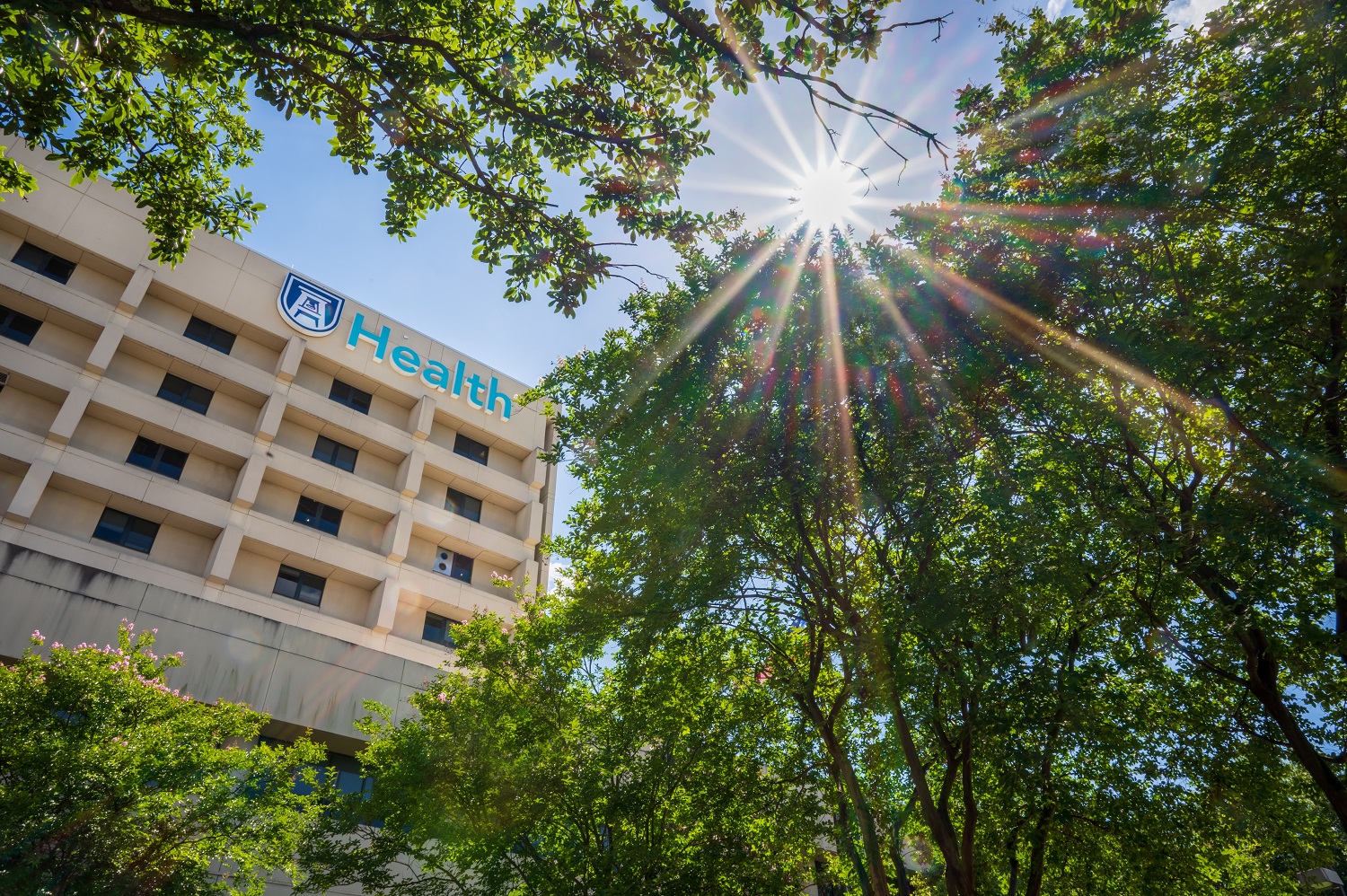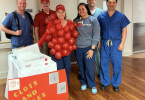Luis Valente was just 18 years old when he noticed swelling around his right femur, with a little bit of pain when he ran during soccer games.
“I think I might have bumped into a corner of a table of something,” is what Luis Valente told his mom when he spoke to her about the issue.
They both agreed to wait a few days to see if the swelling would go down and when it didn’t, they went to their local doctor’s office to see what was going on. The doctor did an X-ray and suspected that Luis might have a blood clot, so he was referred to a doctor in Athens who specialized in blood clots. Another round of X-rays was done with the hopes that an answer would be found.
Valente was in class when he received a call from the doctor asking him to come to the office as soon as possible.
“He sat me down and told me that he saw a giant mass on my right femur when he viewed my x-rays.”
The doctor suggested that Valente get a biopsy and sent him to AU Health to get it done. Valente ended up having to have two biopsies, as the first results came back negative for cancer. The second one however showed that the ‘mass’ in his right thigh was actually a tumor and that Luis had Ewing Sarcoma.
Ewing sarcoma is a rare type of cancer that is found primarily in the hips bones, ribs, or long bones, like your femur. It occurs mostly in children and young adults and accounts for about 1% of childhood cancers.
“I was confused. I didn’t really understand it fully…to this day, I still feel a little confused about it,” says Valente who is now 23 years old.
His care team, consisting of pediatric medical oncologist Colleen McDonough, M.D., and orthopedic surgeon Kelly Homlar, M.D., planned for him to undergo chemo to shrink the tumor before he had surgery to remove it.
Valente ended up receiving five different types of chemo as his care team worked to see which chemo treatment was the most effective at shrinking his tumor. At first the treatment was difficult, as Valente’s body felt exhausted, but as he continued treatment he was able to navigate around the side effects to continue to do the things he enjoyed doing, like spending time with his family.
“My family helped me out a lot. We’d always go, like to Top Golf or the movies, so I didn’t feel so isolated at home,” Valente said.
Valente was also not alone in his cancer diagnosis, as he had a high school friend who also had ewing sarcoma, just at a younger age. Valente was able to talk about his experience with treatment and diagnosis, which helped him through his own treatment.
“He underwent chemotherapy for about 10 weeks followed by surgery, which entailed removal of the middle segment of his femur bone along with the associated soft tissue mass that extended out into his quadriceps muscle. The bone was replaced with a matched cadaver bone, cut to fit his defect and fixed with an intramedullary rod,” explains Homlar.
The recovery time for the surgery was about a month and a half, followed by a few more rounds of chemotherapy, that he finished in January of 2019 and a year of physical therapy.
“I started the physical therapy thinking that it was going to be a breeze. I was like, all right, I’ll be able to run, walk, do everything I used to do without a problem. This shouldn’t be anything new. It’s like I know how to walk. I know how to run. It’s not a big deal,” Valente said when he discussed his physical therapy. “After my first therapy session I realized that it was going to be tougher than I thought.”
Valente pushed through his physical therapy and was soon playing soccer again. While playing, he felt a pop in his leg. It didn’t hurt, so he continued to play, and even went to Six Flags the next day. By the end of the day, however, he couldn’t place any weight on the leg.
Valente called McDonough who brought him in for an X-ray where they discovered that the titanium had a slight dent which was most likely the cause of his pain. Valente underwent surgery again with Homlar.
“He did have to return to the operating room to encourage healing at one of the native bone-cadaver bone junctions which entailed adding bone graft and additional plate/screws. This is fairly common – up to 50% of host-allograft junctions can have nonunion/failure to heal,” Homlar said.
Valente is very grateful for the care he received from Homlar, McDonough, and their care team, both times he went in for surgery.
“They did an amazing job. They were always gentle and taking care of me, making sure I got everything I needed,” he said when asked about his treatment team.
After that recovery period, Valente had to stop playing soccer to prevent any more accidents. While it did sadden him to have to stop soccer, he found other hobbies that brought him just as much joy, such as hunting and auto cross.
Valente advises anyone who is undergoing cancer treatment to keep doing the things you enjoy, as long as your doctor says it’s okay of course. Going out with his friends and family and picking up new and old hobbies helped him push through the difficult chemo treatments and gave him the strength to do his best during physical therapy.
“Just keep doing those things, because then you won’t ever focus on the fact that you are going through what you’re going through.”
